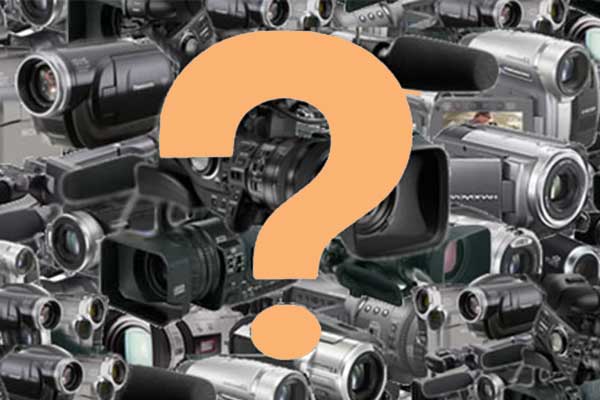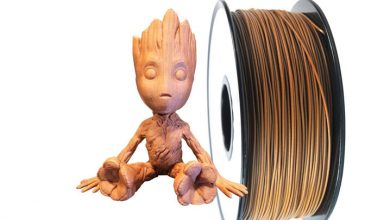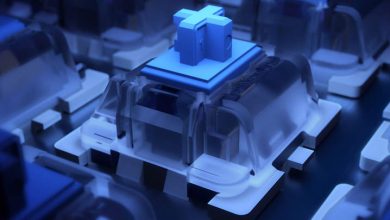Guide to Buying a Camcorder

Even the camcorder, like many other technology products, over time, have undergone metamorphosis: if initially to have quality products (ie cameras that shoot did interesting and quality) we needed to spend a fortune, and adopt solution’s bulky and heavy weight, thanks to the miniaturization and new technologies, the quality has improved greatly, costs are reduced and size have become contained.
Thanks developments have also changed the media: if you had initially recorded on cassettes (MiniDV) or DVD (smaller than standard), now the possibilities of recovery have meant that the camcorders are equipped with hard drives, memory integrated or removable memory card.
Although prices have dropped significantly, the quality of these products was not affected, and more and more people decide to purchase their own camcorder to capture the most beautiful moments or even to dump everything on the computer and do a little video editing.
Table of Contents
General
At the risk of having to repeat, the first thing a user should do before buying a camcorder (like any other technology) is to decide what will be its use. This dam will decide mainly technical characteristics, but especially the price to pay for having a certain digital camcorder. Whether we ordinary users, videographers or advanced users (say, semi-professional or a little less) the size, weight and ergonomics should be important (counting the fact that we will have to hold it, maybe for a long time, in the long run may be inconvenient and annoying, to compromise our shoot).
There are three types of form factors: a vertical development (reduced size, but going to sacrifice a lot of components), horizontal (traditional, with the classic side handle that allows you to have a digital camcorder more bulky, but not sacrificed as for technical features) and easy shooting (who want to combine the ease of development to be vertical, with the completeness of a traditional horizontal: Thus allowing the independent rotation of the machine body divided into two parts).
Very important to keep in mind is also the stabilizer, which allows for precise shooting (or almost), even though it is in motion or at least the coat to become tired and a bit wobbly. Of course for every need, your camcorder, also taking into account the possibility of having to store video in HD resolution for a long period of time before you can connect it to a computer and download the content.
Storage Media
As for the camcorder, this is also a very important factor, only that unlike the camcorder, there are various sizes and various technologies, which may be accompanied with a digital camcorder. For example, you can still find the format (support) storage MiniDV which records on a compact cassette of small size, in a digital format.
Another format is the memory Secure Digital (the classic SD, MicroSD, etc.), which allows you to easily replace the solid support with more memory (some digital camcorders have two memory slots), which occupies a space truly laughable but which also has a considerable capacity (especially if you use the memory to 32 gigabytes).
Some digital camcorders have opted for the built-in memory, but generally (due to costs and then to the small amount present) is flanked by a Secure Digital memory card. Still exist on the market camcorders that record onto a DVD (with reduced size compared to the traditional ones, but that can be read by a computer or any DVD player table).
To top it off are becoming increasingly popular devices equipped with hard disks that allow you to have a space and a remarkable speed storage, thanks to cost more and more reduced to gigabytes (with supports more spacious, thanks to the fact that it is possible record video in 2D or 3D at Full HD resolution).
Zoom, CCD and Brightness.
Very often we turn to the malls or the big chains, computer science, and dwell on the badges displaying the technical specifications of digital camcorder, and as it is for the camcorder, it is focusing on megapixels, but even in these cases more on the size of the zoom … but in a digital format.
Without having to spend a fortune, for most needs is good that the camcorder has an optical zoom lens that goes from 10x up (because now the cost of technology you can safely dare much more) and of course a digital one that helps to collect even though the smallest details.
Of course, we must be careful not to overdo it, because if you overdo it with the size of the optical zoom, then you run the risk that the image is steady, and therefore, we must equip with a support (maybe a tripod) or worse with an optical stabilizer (the vast majority of digital camcorder on the market, is equipped with a digital image stabilizer).
As for the CCD sensor (basically a chip deputy to the image capture and conversion into electrical signals), you must pay attention to what is being proposed. Depending upon the number of pixels contained on its surface, we will also have the quality and resolution as the image that we are going to store.
Excluding the DV format that goes to store images at a resolution of 720 × 576, it is advisable that the camcorder does not have a value below 800,000 pixels (so as to have an acceptable resolution and quality). Of course, the more elaborate digital camcorder, can have as many as 3 CCD, one for each primary color (but here the price goes up exponentially).
As for the brightness, things get complicated in a bit comes into play unit LUX (which at the moment does not seem to have been standardized by the manufacturers and therefore, all equal ” brightness “, you should try the products in question to decide its best). With LUX is defined as ” the measure concerning flat area tangent to the spherical portion, ” or that sensitivity must be in LUX the camcorder for shooting a subject illuminated with a certain value LUX and have made clear.
For instance, if an object has a brightness of 3 LUX, the camcorder must have a number of LUX less than or equal to the object. So, unlike other forms of measurement (eg for display or for camcorder sensors), the lower the value of LUX, the greater the sensitivity of the digital camcorder (in this theory, because in practice, as we have said before this measure has not been standardized by the manufacturers).
Pointing and Accessories
An important feature when using a digital camcorder is the presence of the display and optical viewfinder. Despite all, and two have the same function (ie resume the scene that we wish to store), according to the requirements, there may occasionally have to prefer a system with respect to another.
First, you must say that it is always desirable that the camcorder has a large display (from 3 thumbs up), so you can shoot without difficulty lay our scene. The problem is that the size for the display will be more generous, the greater the cost that we would incur for the digital camcorder.
In addition to costs, the better and bigger the display, the greater consumption with respect to the battery (do not forget that with a strong light exposure, you run the risk of not seeing well what you’re shooting). That is why it is always advisable to have a device that also has an optical viewfinder (for situations demanding enough and when you do not want to consume the battery faster).
As for the batteries, we hardly a long-term (since those that came with the digital camcorder are not very roomy), then it would be appropriate to take precautions, bringing with them at least one spare battery (preferably two just in case).
The batteries we can find in the market are the type Lithium-ion batteries (Li-Ion), Battery Nickel Cadmium (NiCad), Nickel-Metal Hydride Batteries metal (NiMH) batteries. In general, are preferred Li-Ion as they have a longer life and do not suffer from the memory effect (ie do not go fully charged and discharged before use, otherwise the premature deterioration of the battery), even if they cost more.
For the rest we have in many cases the possibility to use a tripod to stabilize more shooting, insert an external microphone for better audio, connect an external lamp (both powered by the digital camcorder itself and externally) to improve the quality of filming and still telephoto, wide-angle lenses (but here we speak of equipment for experts) and the inevitable bag for transport.
Final Thoughts
The world of digital camcorders is as interesting as that of digital cameras (but given the prices of these, more accessible and known by most people). Like everything though, when you approach, you have to have calm and careful. It is true that the things we learn by practicing, but it is also true that we must always be careful what you buy.
The ideal would be for those who are beginners (and difficult to decide to take the next step), buy a camera from the battle, without pretensions, which allows an automatic control of the scene, and the maximum modification of some parameters manually.
For those who want to take the path of video amateur or prosumer, then it is recommended that a device that allow an automatic control over the scene initially, which then can be manually changed in all but the smallest details (a bit as is the case for camcorders ).
Given the low costs, in any case preferable to a digital video camcorder incorporating the scenes in HD or even better in Full HD (given the proliferation of high-definition TV), and why not try to explore the world of 3D.
Product prices and availability are subject to change. Any price and availablility information displayed on Amazon at the time of purchase will apply to the purchase of any products.






